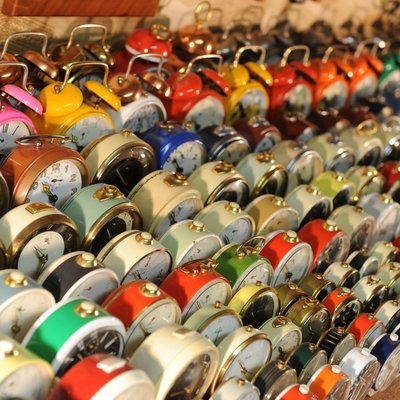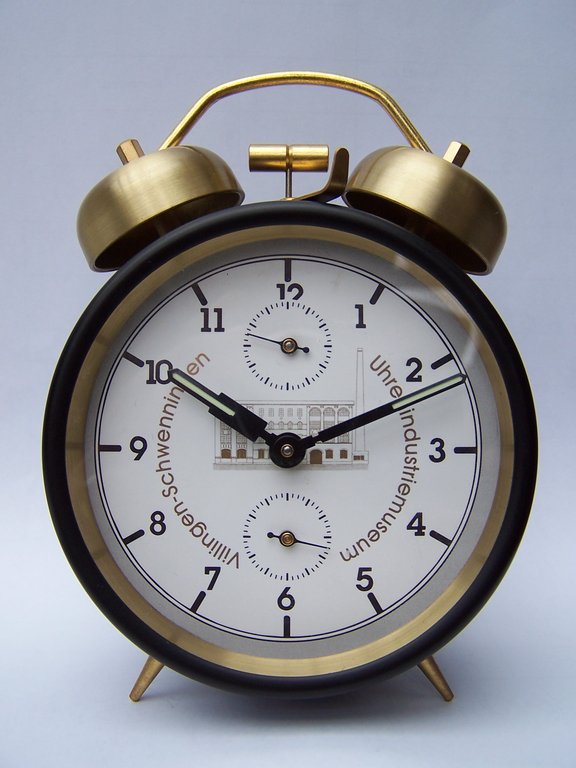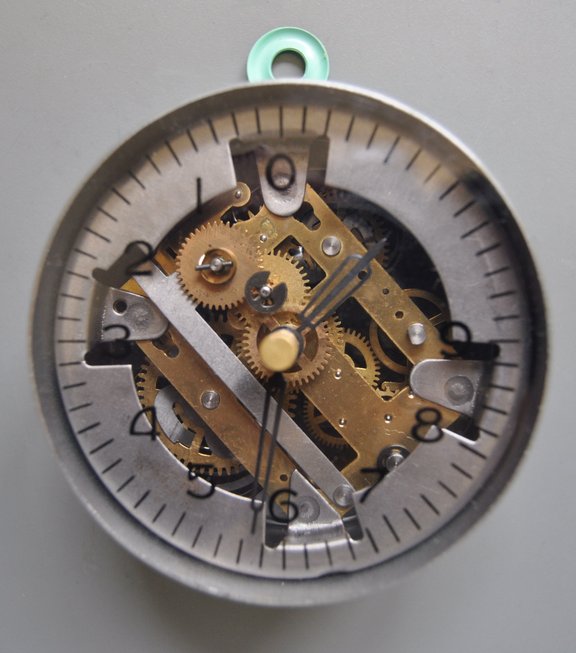
Shop
The museum alarm clock
The museum alarm clock is modelled on the construction of the so-called 'baby alarm clock'.
The alarm clock consists of a round metal case, attached bells and an 'American movement'. This type was produced by American clock factories since the 1880s and manufactured in the Schwenningen clock factories until the 1970s. The alarm movement is purely mechanical with a manual winding mechanism and consists of 150 individual parts. The dial shows an early view of the Württemberg clock factory, today's Museum of Industrial Clock Making.
Due to the high demand, longer delivery times must be expected.
105,00 €
The skeleton clock
The skeleton clock was developed in several stages by the Friends and the volunteer master clockmakers, graduate engineers, precision mechanics and toolmakers and is intended to provide a view into the clockwork. The movement is reduced by punching, sawing and milling to such an extent that recesses are created that allow a view into the inside of the clock. This beautiful showpiece is rounded off by a beech wood base and a glass dome.
Due to the high demand, longer delivery times must be expected.
186,00 €
The propaganda alarm clock
Developed in the 1960s on behalf of the German armed forces, this alarm clock had a special mission: with its help, it was possible to drop propaganda leaflets at the right time and place with a gas balloon. The desired flight time was set with the hands and a plastic strip was pulled off the bottom of the alarm clock. The ring could be used to attach the alarm clock to the balloon. The rear hook held the leaflet package. Once the balloon was in the air and it was time to drop it, the hook would come loose and let the packet fall. Balloon and alarm clock then disappeared unnoticed into the sky. The so-called "leaflet drop clockwork" was manufactured by the company Gebrüder Hauser in Weigheim. The remaining stock was made available to the Museum of Industrial Clock Making.
17,00 €
In the watch industry, micrometers were used daily to measure lengths and diameters. This model has a measuring range of 0 - 25 mm and made measurements in the 10 µm range possible with scaling steps in 1/100 mm. Originally, the outside micrometer also circulated under the name micrometer. The offered specimens were manufactured by the Moser company from Unterkirnach, presumably in the 1960s and 70s. The devices are as good as new and not calibrated.
24,00 €


